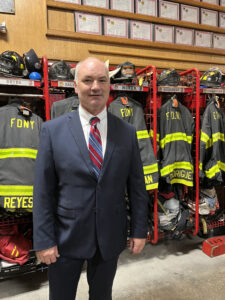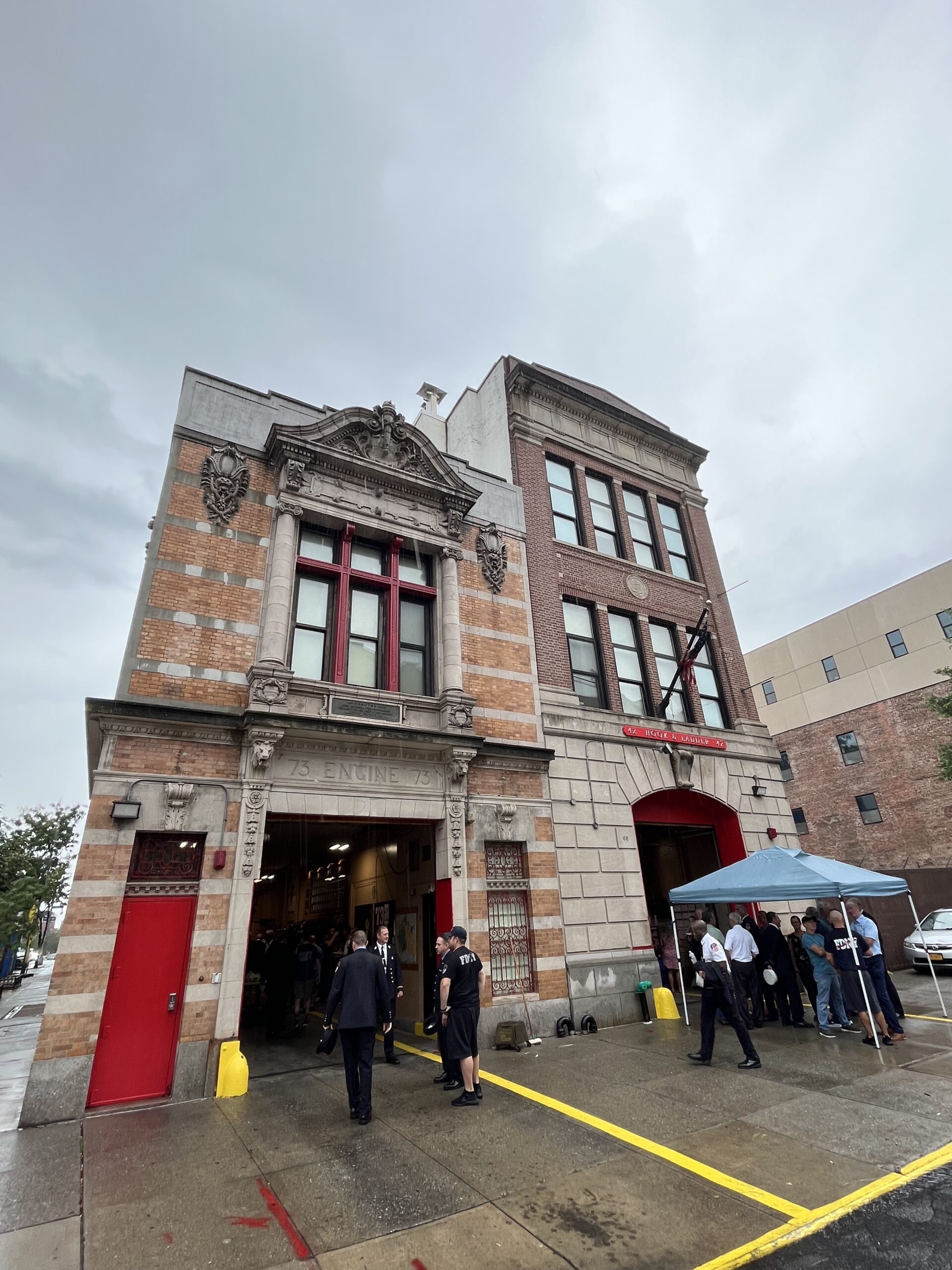The storm outside the Engine 73 / Ladder 42 firehouse grew from a drizzle to a downpour as the ring of the silver bell honored the 343 firefighters who died in the line of duty on September 11, 2001.
Engine 73 / Ladder 42 hosted their 22nd Anniversary Memorial Mass on Sunday, September 10, at the station’s quarters on Prospect Avenue, honoring the memory of four former South Bronx firefighters: Deputy Chief Joseph Marchbanks Jr. of Battalion 12, Lieutenant Raymond Murphy of Ladder 16, Lieutenant Brian Ahearn of Engine 230 and Peter Bielfeld of Ladder 42.
“It was through the sacrifice by the thousands who worked on that pile, the tens of thousands who are suffering the effects of it today, and the hundred thousand people that are at risk of developing a 911-related illness, that we brought hope to a hurting world,” said Father Mychal Judge, who led the mass.
In total, 341 first responders have died from 911-related illnesses since the morning the Twin Towers fell, leaving 1.8 million tons of wreckage behind, according to the Uniformed Firefighters Association.

Rescue workers were in direct contact with carcinogenic contaminants released from debris fires, as well as other harmful particles including asbestos, silica, metals, concrete, and glass. Exposure to 911 agents contributed to short- and long-term health conditions that first responders as well as civilians are suffering and dying from today.
Lieutenant Joseph Camastro of Ladder 42, who sits on the Executive Board of the United Fire Officers Association Local 845, worked on “The Pile” from September 2001 through the following January. Firefighters at the site wore cloth masks. A 2003 report revealed that the EPA, then led by Administrator Christine Todd Whitman, withheld knowledge about the health risks posed by the Towers’ collapse from the public.
“The safety precautions we have now are completely different,” said Camastro. Today, firefighters wear respirator masks that protect them from ash and other air pollutants.
The Centers for Disease Control and Prevention reports that 85,954 first responders and 39,540 survivors are enrolled in the World Trade Center Health program. 31,266 members hold at least one cancer certification. That data does not include 2,506 deceased members with cancer certifications.
On Monday, September 11, a prayer was held at the 41st Precinct Headquarters, which serves Hunts Point and Longwood. Community Council President of the 41st Precinct, Raymond Arroyo, was in attendance. He served as a first responder on 911.
“At the time I was 29 years old. I was a member of the New York State National Guard when the planes hit”, said Arroyo. He was one of the first soldiers who arrived at ground zero.
Arroyo says he gets a physical exam every year. “I’m checked every year for cancer, but I’ve lost a few friends already who were with me on ground zero,” he said.
Congress established the Victim Compensation Fund in 2001 to offer financial support to those most affected by the events of 911. Since then, first responders and civilians have battled to expand eligibility criteria, filing deadlines and funding.
On July 29, 2019, President Trump signed The VCF Permanent Authorization Act into law, which extends the claim filing deadline for the fund from December 18, 2020, to October 1, 2090, and “appropriates such funds as may be necessary to pay all eligible claims,” according to the Justice Department.
Camastro said increasing funding for the fund has continued to be a battle.
“I’ve gotten to know a lot of the firefighters here,” said Christine Mendoca, a South Bronx resident who lives down the block from Engine 73 / Ladder 42. “When the weather’s nice, their doors are open,” she said.
Mendoca believes it’s deplorable that firefighters have to keep fighting to get funding. “They showed up for us,” she said.
In the days leading up to this year’s anniversary, the FDNY added the names of 43 first responders who died from illnesses from their rescue work on 911 to the World Trade Center Memorial Wall at FDNY headquarters in Brooklyn.
“We’re never going to get over the sting of what happened,” Camastro said. “Now it’s just about trying to get the best possible medical care for those who are affected from 911-related illnesses.”

